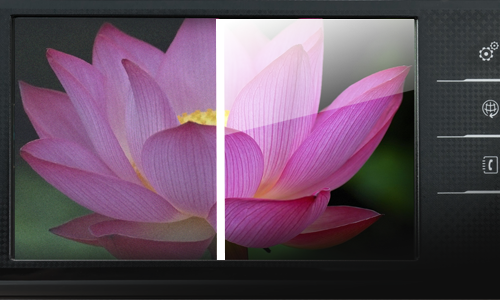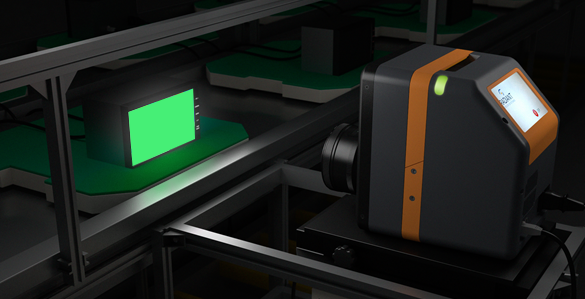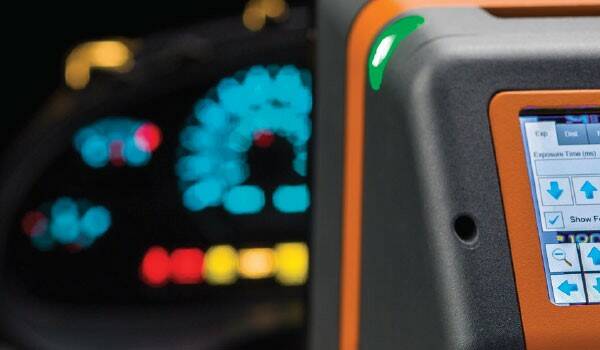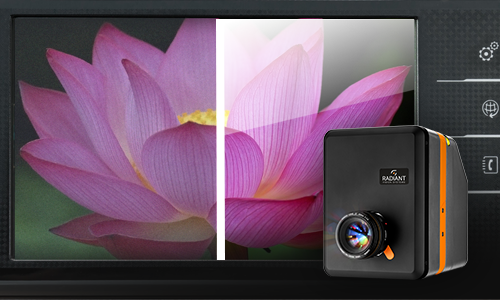Ensuring Quality in the Next Automotive Display Generation

This week, Radiant will travel to Michigan to sponsor and participate in the annual Vehicle Displays Detroit Symposium & Expo. Experts from the Radiant global automotive solutions team will present a technical paper and demonstrate scientific imaging technologies for light and color measurement of displays used in all areas of the vehicle. With the automotive industry booming with new HMI trends, sensing, ADAS, and visualization technologies, Radiant’s automotive light and display measurement systems are now being applied to ensure design and production quality of all illuminated and digital components in consoles, instrument panels, windshields (HUD), mirrors (CMS), and virtually all visible spaces.
The Society for Information Display’s (SID) 25th annual Vehicle Displays Detroit will bring together leaders in display design, manufacture, and test for the automotive market. With the most rapidly expanding application of displays in any industry, automotive manufacturers are challenged to catch up to the technological advances and quality expectations of displays in markets like consumer electronics and virtual or augmented reality. With an equal 25 years in the business of optical measurement leading display test applications for consumer devices, Radiant leverages its expertise to help automakers satisfy the quality expectations of their display-savvy customers.
Setting the Standard for Sparkle
From tabletop #46 at the expo, Radiant will give an interactive example of one of our automotive display test solutions: a measurement system for quantifying and grading the effect sparkle in anti-glare displays, as it is perceived by human viewers.
Displays are increasingly integrated into environments where variable light conditions are common, like vehicle consoles and dashboards. Anti-glare (AG) films are applied to displays to minimize reflections from ambient light and ensure that important information is viewable. The variable surface structure of the AG film allows ambient light to be diffused evenly, but can also compete with the pixel geometry of the display as light is emitted through the film.

Anti-glare films are applied to reduce the reflection of ambient light that impedes visual clarity of the image on screen. Without anti-glare film (right) and with an anti-glare film (left).
However, as display pixels near the size of the facets in the applied AG film structure, a visual effect called sparkle results, causing low display clarity that can appear grainy to a human observer. Measuring perceived sparkle ensures that the user experience drives the manufacture of AG displays. Such a measurement can be used not only in quality control during display production, but also in supplier qualification by OEMs who source third-party displays for integration.
Based on extensive lab testing at its headquarters facility in Redmond, Washington, U.S.A.—as well as on-site studies at automotive OEM customer facilities—Radiant has defined a standard sparkle measurement method that produces quantifiable results that consistently correlate to human visual perception of quality in displays. Using high-resolution ProMetric® Imaging Colorimeters and Photometers, paired with TrueTest™ Software, the Radiant Sparkle Measurement Method is the first to allow OEMs to set a numeric tolerance (for instance, less than 2% measured sparkle) for displays supplied by their vendors, ensuring a consistent level of quality across all displays regardless of supplier, product, or time and location of testing.

Sparkle test set up with the ProMetric imaging colorimeter.
Visitors to Vehicle Displays Detroit are encouraged to participate in an interactive demonstration from Radiant tabletop (#46) to rate the effect of “sparkle” on anti-glare displays and compare their perception of display quality to the Radiant system’s measurements.
Symposium Presentation
In addition to our sparkle measurement demonstration on the expo floor, Radiant Automotive Business Leader, Matt Scholz, will lead a technical presentation about emerging display test requirements for camera monitor systems (CMS) during day two of the Vehicle Displays symposium, during Section 6 on Metrology. Join Matt for presentation 6.4 "Understanding and Applying Standards-Based Display Testing for Camera Monitor Systems" on Sept. 26 from 9:30 to 9:50 A.M. Audience members will have the opportunity to ask questions following the presentation.
Understanding and Applying Standards-Based Display Testing for Camera Monitor Systems
Adopted by several countries, UN Regulation No.46 (UN R46) (based on standard ISO 16505:2015) is the first documented standard to permit the legally-required mirrors in passenger and commercial vehicles to be replaced by electronic display-based camera monitor systems, or CMS. In Radiant’s technical presentation, Matt will clarify the requirements of ISO 16505 and UN R46 for visual display performance testing as part of regulatory CMS evaluation, and offer considerations for selecting a measurement system with advantages for testing efficiency.

Lexus recently announced that camera-based mirrors will debut in the redesigned ES, to go on sale exclusively in Japan in October 2018. (Source: www.autonews.com, 12 September 2018)
As pressure to understand and adopt regulations for CMS testing grows, automotive OEMs who are able to incorporate CMS into their vehicles are not only able to achieve first-to-market design goals, but also realize another step toward connected vehicle technology. Determining the most direct path to compliance will improve design and time to market for OEMs looking to implement CMS in their vehicles, granting them a distinct competitive advantage for offering advanced vehicle systems. Don’t miss a chance to learn about these important display trend regulations and hear what’s coming next for CMS from Matt at the Vehicle Displays Symposium (Wed. Sept. 26, 9:30 to 9:50 A.M.).
Learn more about Radiant’s display and lighting measurement solutions for automotive quality testing, including solutions for:
- Instrument Clusters, Controls, Tell-Tales, and Indicators
- In-Vehicle Displays
- Internal and External Lighting
- Head-Up Displays (HUDs)


To learn more about Sparkle measurement, view Radiant’s webinar on “Defining a Sparkle Measurement Standard for Quality Control of Anti-Glare Displays.” And we hope to see you in Detroit Sept. 25-26 at Vehicle Displays!


SPECIAL OFFER: Waive the $50 exhibit hall fee – Register using ID Code GEX1836 for complimentary admission to Vehicle Displays Detroit, courtesy of Radiant. Register online: www.vehicledisplay.org
Join Mailing List
Stay up to date on our latest products, blog content, and events.
Join our Mailing List
